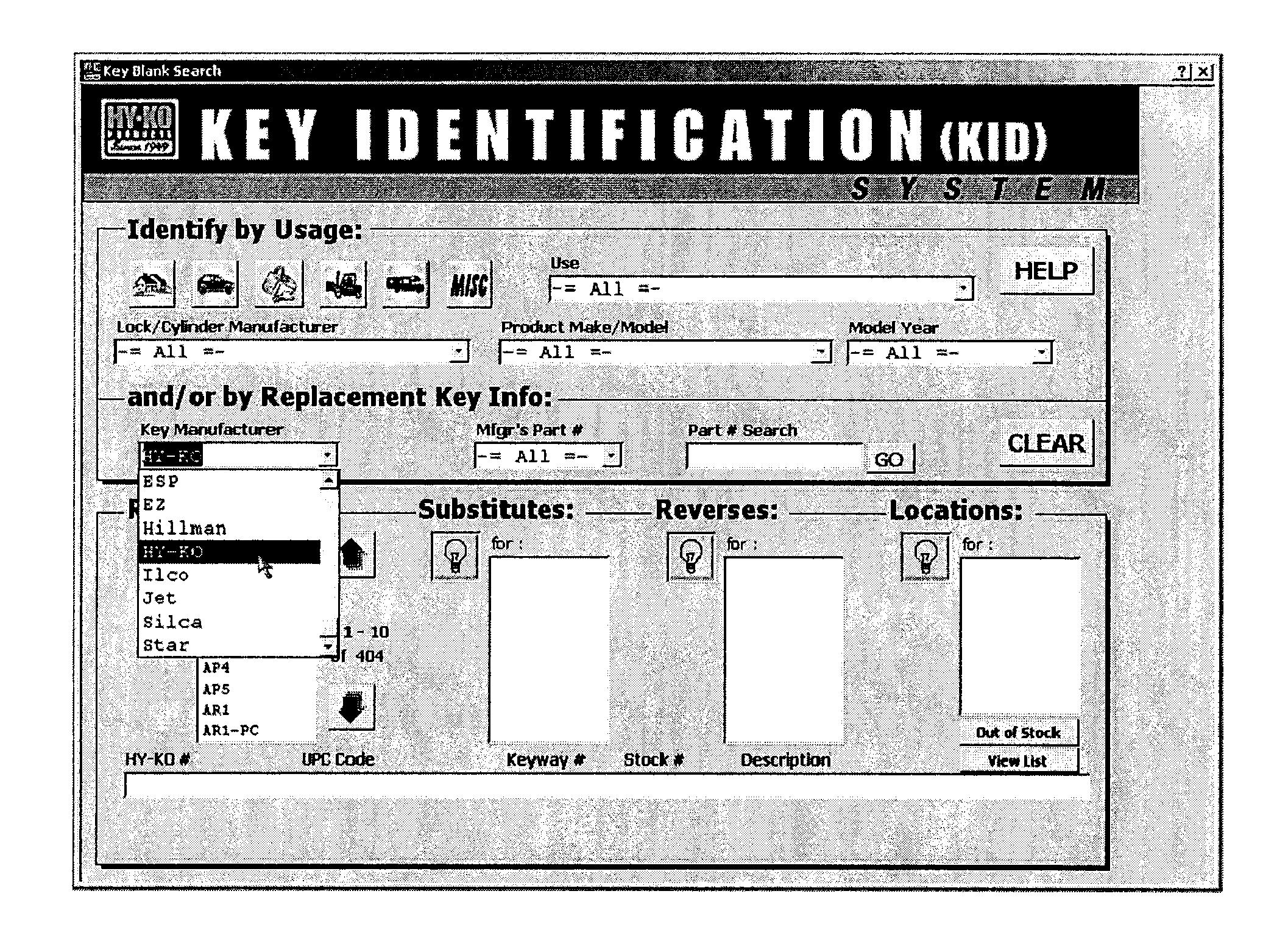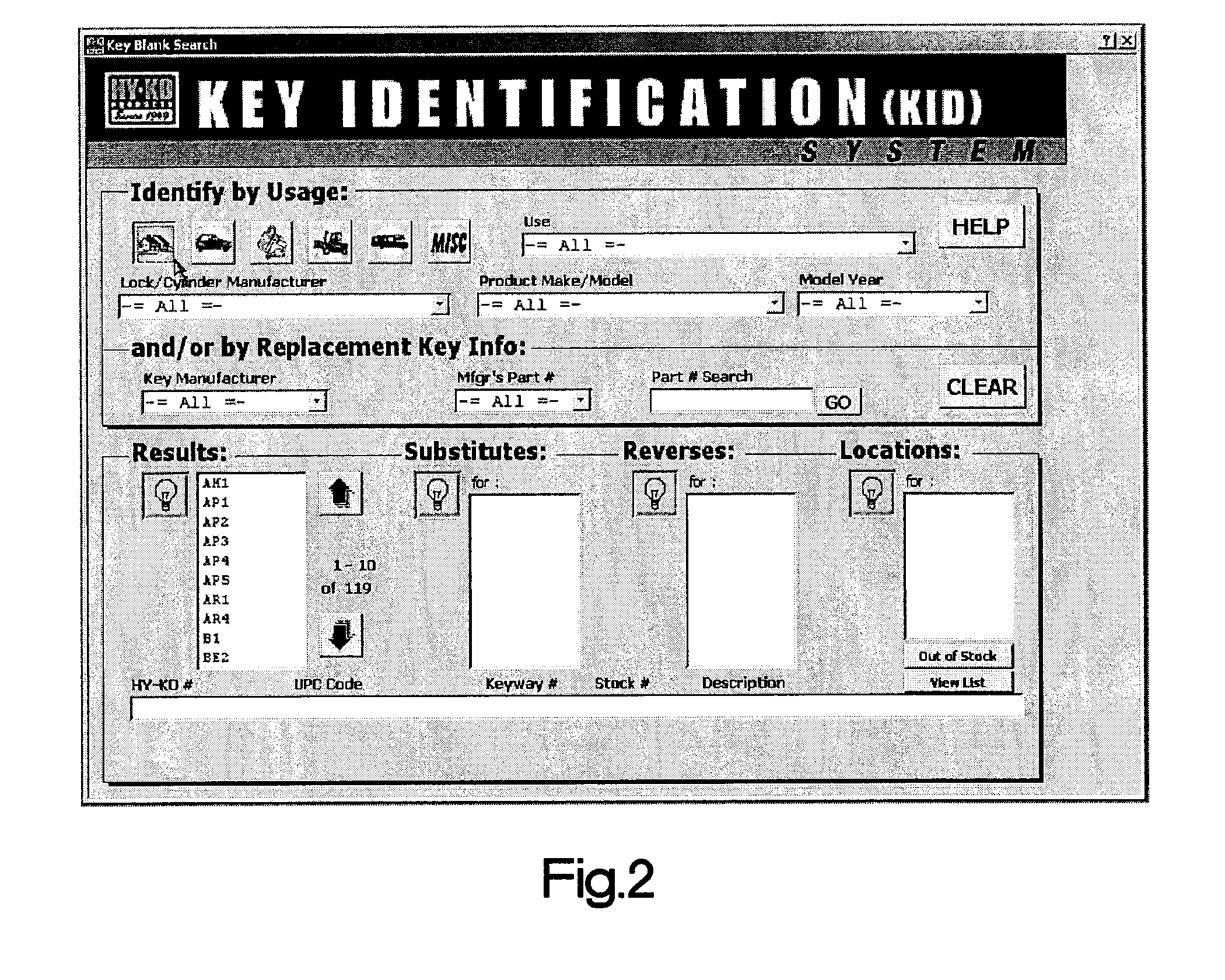Object identification system
a technology of object identification and object, applied in the field of object identification systems, can solve the problems of difficult, tedious and time-consuming affair, and inability to accurately identify such objects with regularity, and achieve the effect of absolute accuracy
- Summary
- Abstract
- Description
- Claims
- Application Information
AI Technical Summary
Benefits of technology
Problems solved by technology
Method used
Image
Examples
example 1
[0049]The Key Identification System (KIDS) is an innovative method for key identification in the master key replication process. Overall, it provides for increased accuracy and efficiency in crucial stage of key replication—the identification and provision of an appropriate key blank. Through its reliance upon the user to inspect and provide inputs about the key that is to be replicated, errors in the operation of complex computing and mechanical equipment (such as the light scanners or numerous key blank test boxes described in the background of invention) will be avoided. The hardware required by the system can be purchased or constructed from readily available items, whereas and the software applications are easily available for distribution through well-known channels. Thus, the essential elements of the invention provide a novel method of key identification and replication that can be quickly and readily adopted by the industry. Moreover, because the invention can be readily ad...
example 2
[0071]The display rack represents another unique aspect of the identification system of the present invention. It is comprised of various individual components. Each of these individual components is assembled together to form a single unit. A flexible system can be created and modified easily by grouping a number of KIDs input stations to a single display rack and / or database (perhaps relying on a computerized network). These units will be integrated with other electronic hardware and software also mentioned elsewhere in this application.
[0072]The basic structure of the Integrated Display Panel is shown in detail in FIG. 15. Essentially, rack 100 comprises an organized grid of light sources 102, such as LEDs, incandescent bulbs or the like. These light sources are selectively wired, in a manner consistent with the description below, and arranged to interact with the system by way of a single display driver connector port 104. Individual product items 106 can be stored and / or displa...
example 3
[0084]The identification system of the present invention relies upon the aforementioned database means for comparing specific observed traits of an unknown object with accumulated data concerning those same traits for a wide range of known items. As such, the database means forms an indispensable part of the inventive system. The data itself is organized into a number of standardized fields which correspond direct to the specified trait being inputted by the user.
[0085]As mentioned above, the programming required by the database and associated software applications can be achieved using known programming languages and techniques. The software could be implemented using database platforms and operating systems. Alternatively, the program could be specially written utilizing object-oriented or other known programming strategies and computer codes such as Active X, XML, C+, etc. Artificial intelligence concepts could be implemented so that the system would essentially adapt to learn fr...
PUM
 Login to View More
Login to View More Abstract
Description
Claims
Application Information
 Login to View More
Login to View More - R&D
- Intellectual Property
- Life Sciences
- Materials
- Tech Scout
- Unparalleled Data Quality
- Higher Quality Content
- 60% Fewer Hallucinations
Browse by: Latest US Patents, China's latest patents, Technical Efficacy Thesaurus, Application Domain, Technology Topic, Popular Technical Reports.
© 2025 PatSnap. All rights reserved.Legal|Privacy policy|Modern Slavery Act Transparency Statement|Sitemap|About US| Contact US: help@patsnap.com



